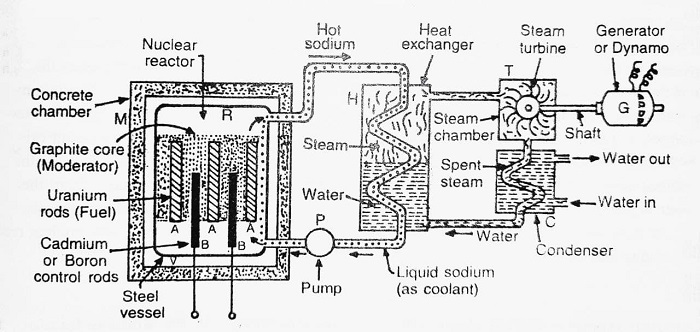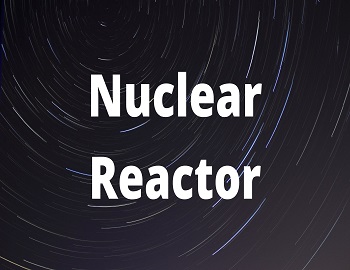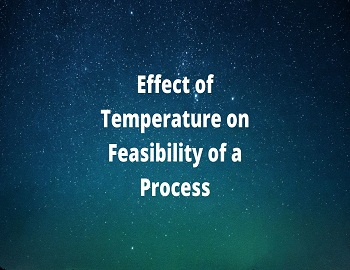Table of Contents
What is Nuclear Reactor?
The nuclear reactor (or atomic reactor) is a furnace in which energy is produced by the nuclear fission process.
Principle- It is based upon a controlled nuclear chain reaction.
Construction of Nuclear Reactor:
(1) Nuclear Fuel- The fissionable material used in nuclear reactors for producing energy by the fission process is called nuclear fuel. Uranium enriched with 92U235 or Plutonium serves as the fuel. It is contained in hermetically sealed stainless tubes.
(2) Moderator- In nuclear reactors, light nuclei called moderators are provided along with the fissionable nuclei for slowing down fast neutrons. The moderators commonly used are water, heavy water (D2O), graphite and deuterium.
(3) Control Rods- They have the ability to capture the slow neutrons. To control the reaction from being violent, rods of boron or cadmium (called control rods) are inserted in the holes of the reactor. As a result, the desired number of neutrons are absorbed and only a limited number of neutrons are left to produce fission.
(4) Coolant- The substance which is circulated through the nuclear reactor to take out the heat energy produced in it, is called coolant. In most successful reactors, liquid sodium metal is used as the coolant. In some reactors, however, carbon dioxide gas and even water are used as coolants to transfer the heat generated in a reactor to the heat exchanger.
(5) Shielding- The whole reactor is protected with concrete walls 2 to 2.5 metres thick so that radiations emitted during the nuclear reaction may not produce harmful effects on the persons working on the reactor.

Working of Nuclear Reactor:
At the start, slow neutrons cause the fission of U235. Due to this, Barium, Krypton and three fast neutrons are produced and also a large amount of heat energy is produced. Now, these fast neutrons are slowed down with the help of a moderator. The control rods are adjusted in such a way that out of three neutrons, the two neutrons are absorbed by them. Now only one slow neutron is left to carry out chain reaction further and so on.
The heat energy so produced in the nuclear reactor is absorbed by the coolant. The coolant transfers this heat energy to the water in a heat exchanger. Due to this, water is heated and finally, this water is converted into steam. This steam produced at a very high pressure runs the turbine. This turbine, in turn, rotates the armature coil of the generator and hence electricity is produced.
Uses of Nuclear Reactor:
- Electricity Generation- It is one of the very important peaceful use of nuclear energy. The intense heat generated in the nuclear reactor is used to convert water into steam which drive turbine to produce electric power at a large scale.
- Nuclear reactors are used to produce radioactive isotopes. These radioactive isotopes are used in medicines, biology, agriculture, industry and scientific research.
- They can be used for the propulsion of ships, submarines etc.
- As a source of fast neutrons for scientific research and transmutation of elements.
- They are used to produce neutron beam of high intensity. This neutron beam is used in the traetment of cancer and nuclear research.









Comments (No)